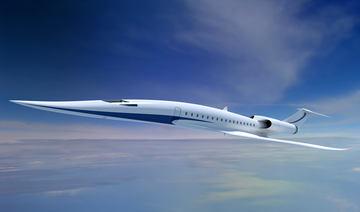Five companies including Subaru hav...
19
09
Five companies including Subaru have succeeded in the world's first autonomous collision avoidance of a small unmanned aerial vehicle at a relative speed of 200km/h! A big step toward social implementation of small unmanned aerial vehicles
Delivery
1 comment, 1 commentSubaru and five other companies have succeeded in autonomous collision avoidance of a small unmanned aerial vehicle at a relative speed of 200km/h for the first time in the world.
Subaru, Japan Radio, Japan Avionics, ACSL, and Magellan Systems Japan recently announced that they will be downsizing and reducing power consumption in a wide-area flight area (Minamisoma City, Fukushima Prefecture) from September 9th to 10th. The sensor was mounted on a 10kg-class unmanned aerial vehicle, and an autonomous collision avoidance test was conducted at a relative speed of 200km/h, which is the actual operational speed range, and the world's first success was revealed. This is a big step forward as a goal for social implementation of small unmanned aerial vehicles.

In the future, we will establish a collision avoidance system and promote efforts toward the social implementation of unmanned aerial vehicles
Status of collision avoidance flight tests
Small unmanned aerial vehicles, generally called drones, and medium-sized unmanned aerial vehicles, which are slightly larger than drones and can be equipped with larger sensors, are already being used in fields such as agriculture, and are also used for transporting goods and distress during disasters. There are high expectations for applications such as person search and distribution infrastructure, and the number of operations is increasing. However, collision avoidance technology has become an urgent issue for safe use, as evidenced by reports of near-miss cases of unmanned aircraft and manned aircraft such as doctor helicopters in Japan. In addition, collision avoidance technology is essential for the realization of "flight beyond visual line of sight (*1)" and "flight over third parties (*2)," which are required for practical use of unmanned aerial vehicles. *1: A flight in which the operator of the unmanned aerial vehicle cannot visually confirm the position and attitude of the unmanned aerial vehicle, as well as the safety of the flight. Although it is essential for long-distance logistics and infrastructure inspection, it is necessary to implement safety measures that replace the operator's visual inspection and implement collision avoidance technology. *2: Flying over a third party who is not involved in the operation of the unmanned aerial vehicle. It is essential for logistics in urban areas, etc., but in order to realize it, technology that establishes high safety and reliability is required. This test was carried out by the New Energy and Industrial Technology Development Organization (NEDO), a national research and development agency. This was implemented as part of the development of flight management functions to realize flight (for isolated islands). /h) is approached from each front direction, and based on the detection data of various sensors mounted on the unmanned aerial vehicle, a collision avoidance route is generated in real time, and the unmanned aerial vehicle autonomously avoids flight along this avoidance route. Make sure. It was also confirmed that the unmanned aerial vehicle would return to its original flight path after avoiding the manned helicopter. Going forward, the five companies will use the results of this project to establish a collision avoidance system and promote efforts toward social implementation of unmanned aerial vehicles.
motor fan
Last update: MotorFan

![[Kill personally developed games] Top class in app history! Too beautiful water puzzle "a [Q] ua" | Famitsu App for smartphone game information [Kill personally developed games] Top class in app history! Too beautiful water puzzle "a [Q] ua" | Famitsu App for smartphone game information](https://website-google-hk.oss-cn-hongkong.aliyuncs.com/drawing/article_results_7/2022/3/3/66755df992ff2d2b1e1ab43844ef9f88_0.jpeg)





![[Latest in 2021] 10 recommended seat covers for cars!If you want to improve the texture and functionality of the car, choose the mounting type and material. [Latest in 2021] 10 recommended seat covers for cars!If you want to improve the texture and functionality of the car, choose the mounting type and material.](https://website-google-hk.oss-cn-hongkong.aliyuncs.com/drawing/article_results_7/2022/3/3/e5b44589e77141f3a633189165fb6f60_0.jpeg)